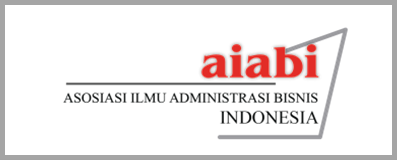Analysis of the Root Cause of Delays in Delivery of Export Cargo with Incoterms Free On Board at PT. Vifiera Minova Brothers Using the Fish Bone Diagram Method
DOI:
https://doi.org/10.31334/bijak.v22i1.4384Keywords:
Diagram Fishbone, Export, Delay, Delivery,Abstract
Delays in the delivery of goods in export cargo containers are a problem that is often faced by business people, especially those who use Free on Board incoterms. This delay has a significant impact on customer satisfaction. Therefore, it is important to conduct an in-depth analysis of the factors that contribute to or even become the root of the problem. The purpose of this study is to analyze the root cause of delays in the delivery of export cargo goods using containers with inconterm free on board using the fish bone diagram method. By identifying and grouping these causes into relevant categories. This research was conducted using a qualitative method, with descriptive data analysis techniques. The data obtained from the results of this study were processed and analyzed using the Fish Bone Diagram method. The results of this study show that the main factor causing frequent delivery delays is during the process of picking up empty containers at the depot.References
Hannanto, Hernanda. (2016). "Factors Causing Delays in Delivery of Export Goods at PT
Iron Bird Transport, Jakarta in 2016". Journal of Transportation and Logistics Management,
STMT Trisakti
Irawan, Suhendi, Syifa Naf"atul Husna, and Muthia Hafni. (2022). A Study on Logistics and Supply Chain Performance at PT X Bogor, West Java"Journal of Applied Science: Agricultural Information and Technology Transfer Vehicle, Volume 12, Number 1.
Januar, Helix. (2024) Optimization of Strategies to Deal with Container Shortage Using the Fishbone Diagram Method on the KMTC Line at PT Samudera Agencies Indonesia Semarang. Undergraduate thesis, Diponegoro University, Semarang.
Moleong, Lexy J.. Qualitative Research Methodology / Prof. Dr. Lexy J. Moleong, M... . 202. (2021). Qualitative Research Methods.
Neyestani, B. (2017). Seven Basic Tools of Quality Control: The Appropriate Quality Techniques for Solving Quality Problems in the Organizations. California Digital Library.
Notteboom, T., & Rodrigue, J. P. (2008). Containerisation, box logistics and global supply chains: The integration of ports and liner shipping networks. Maritime Economics and Logistics, 10(1–2), 152–174. https://doi.org/10.1057/palgrave.mel.9100196
Paresh, Girdhar & Moniz O, P. (2006). Practical Machinery Vibration Analysis and Predictive Maintenance. Burlington, MA,. https://perpus.petra.ac.id/catalog/site/detail?id=2225259
Ramadhani, T. N. (2023). Analysis of Delays in Delivery of Goods to Consumers at the Bandar Lampung Post Office Using the Fishbone Method. Madani: Multidisciplinary Scientific Journal. https://jurnal.penerbitdaarulhuda.my.id/index.php/MAJIM/article/view/173
Tongzon, J., & Heng, W. (2005). Port Privatization , Efficiency and Competitiveness : Some Empirical Evidence From Container Ports / Terminals Wu Heng a Thesis Submitted for the Degree of Master of Social Science Department of Economics.
Utomo, P. S. (2018). Application of Analytical Hierarchy Process (AHP) in Failure Mode And Effect Analysis (FMEA) to Identify the Cause of Piano Up Defect in Assy Up Department Case Study: PT. Yamaha Indonesia. UII Journal, 23–39.
Vikaliana, R., & Arizqi, R. M. N. (2023). Analysis of Delays in Delivery of Finished Products at Pt Tsuchiyoshi Procore Indonesia. Journal of Intent: Journal of Integrated Industry and Technology, 6(2), 1–15. https://doi.org/10.47080/intent.v6i2.2891
Wijaya, A., Putri, A. Y. R., & Saleh, A. D. (2022). Incoterms in International Trade Agreements. JULIA: Amsir Litigation Journal, 10(1), 124–133.
Zhang, H., & Li, W. (2019). Zhang, H., & Li, W. (2019). Material Selection in Packaging: Challenges and Solutions. Journal Of Materials Science.
Downloads
Published
Issue
Section
License

This work is licensed under a Creative Commons Attribution-ShareAlike 4.0 International License
Please find the rights and licenses in Majalah Ilmiah Bijak By submitting the article/manuscript of the article, the author(s) agree with this policy. No specific document sign-off is required.
- License
The commercial use of the article will be governed by the Creative Commons Attribution license as currently displayed on Creative Commons Attribution-ShareAlike 4.0 International License.
2. Author(s)' Warranties
The author warrants that the article is original, written by stated author(s), has not been published before, contains no unlawful statements, does not infringe the rights of others, is subject to copyright that is vested exclusively in the author and free of any third party rights, and that any necessary written permissions to quote from other sources have been obtained by the author(s).
3. User Rights
Majalah Ilmiah Bijak spirit is to disseminate articles published are as free as possible. Under the Creative Commons license, Majalah Ilmiah Bijak permits users to copy, distribute, display, and perform the work for non-commercial purposes only. Users will also need to attribute authors and Majalah Ilmiah Bijak on distributing works in the journal and other media of publications.
4. Co-Authorship
If the article was jointly prepared by more than one author, any authors submitting the manuscript warrants that he/she has been authorized by all co-authors to be agreed on this copyright and license notice (agreement) on their behalf, and agrees to inform his/her co-authors of the terms of this policy. Jurnal Bijak will not be held liable for anything that may arise due to the author(s) internal dispute. Majalah Ilmiah Bijak will only communicate with the corresponding author.
5. Miscellaneous
Majalah Ilmiah Bijak will publish the article (or have it published) in the journal if the article’s editorial process is successfully completed. Jurnal Bijak editors may modify the article to a style of punctuation, spelling, capitalization, referencing and usage that deems appropriate. The author acknowledges that the article may be published so that it will be publicly accessible and such access will be free of charge for the readers as mentioned in point 3.
Every accepted manuscript should be accompanied by "Copyright Transfer Agreement"prior to the article publication.





1.png)




